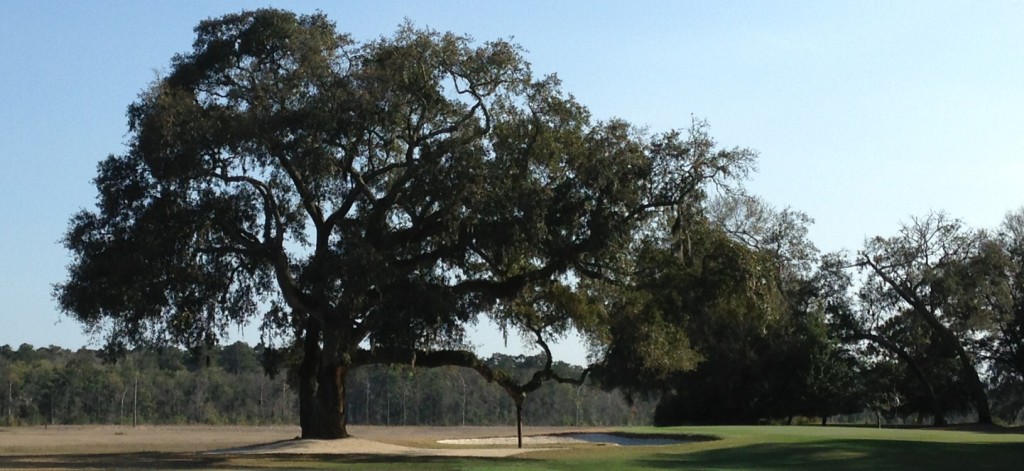The notion of building golf courses in remote areas free of real estate subdivisions and unnatural intrusions has been the most welcomed concept in the modern age of the sport with such bold designs as Sand Hills, Bandon Dunes, Sutton Bay, Bully Pulpit and, more recently, Streamsong. On a much more discreet level, clubs have been founded on this model, but the courses have had good fortune to be constructed on pristine land in close proximity to urban areas. Certainly, Pablo Creek Golf Club is a magnificent example of perfecting such a concept. Pablo Creek blends all the right ingredients, namely, a pure golf club situated in a vast natural setting with little gimmickry in its design borne from the broad vision of its founders to maintain all these wonderful features.
The setting of Pablo Creek is quite sublime and unassuming, but on further reflection and closer examination, it becomes clear how amazing it was that such a site existed. To explain, Pablo Creek is located in Jacksonville, Florida just off Butler Boulevard, the main causeway connecting Jacksonville proper to Jacksonville Beach, to Ponte Vedre. Within a quarter of a mile after exiting Butler Boulevard, the Florida landscape of another age unfolds in all directions. Generally bordered by Butler Boulevard, the Intracoastal Waterway, I-295 East and route 210, Pablo Creek is enveloped in a wild north Florida lowlands sanctuary. This unique parcel is possible due to the vision of H. Jay Skelton and the connection he had to the thousands of acres owned by the founders of the company he led, Winn Dixie, Mr. Skelton was Chairman of the Board at Winn Dixie and was inexorably intertwined with the Davis family, the founders of Winn Dixie.
Stepping back, the history associated with the Pablo Creek environs is fascinating. In her book on the Davis family and their ties to this area, Dee-Dot Ranch and Twenty Mile House, A History, Dena Snodgrass described it as follows;
“Fort Davis was built in 1942 by James Roosevelt Stockton, Sr., who named it “The Haunt of The Hermit.” As a gentleman’s hideaway, it was the scene of many gatherings. Mr. and Mrs. J.E. Davis bought the property in 1954. Fort Davis is a proper ranch house for Dee-Dot’s 20,000 acres. The name of the ranch is a contraction of the names of the Davis’ son and daughter, Dana and Dorothy.”
J.E. Davis, one of the four siblings who created Winn Dixie, grew the ranch to over 55,000 acres and the preserve encapsulating Pablo Creek remains today. Fast forwarding to Jay Skelton’s vision for a very private golf course buffered by Dee-Dot, Tom Fazio designed the course to fit the surrounds. The design was not forced on the land, which is the key to sound golf architecture. The entrance drive and clubhouse blend with the low country thicket producing a palpable charm. With this as a backdrop, arriving at the first tee culminates a most captivating legacy.
Number two is a fun follow up to the meaty first and our host set the tone for the day by lacing a driver despite it only being a 321 yard four par. Kevin casually quipped, if it’s a 4, it’s a driver. The front nine par 3’s also stand out as number five is a beauty and eight is all you can handle at 203. The eighth also gives a glimpse of the low country landscape that is more and more featured after the turn. The ninth is the number one handicap at 448, but it’s an interesting two and a half shotter in all respects.
The back nine is a standout incoming half as the course weaves around the mangroves and along Pablo Creek. Fourteen is a marvelous short four with an ancient Oak framing the hole. Across Pablo Creek and over an expanse marsh, a glimpse of Dee Dot Ranch is possible. 55,000 acres of wild Florida can well be imagined at the edge of the par 3 fifteenth. Sixteen and seventeen are a solid 5 and 4 respectively, setting up the terrific eighteenth. The home hole is straightaway, but traverses a rolling fairway cut between the Creek and the jungle. An elevated green has a subtle slope back to front and can present dramatic finishes if the player is too aggressive or overly conservative. The eighteenth requires a confident play of two solid shots (a second shot three iron in my case) and steady nerves on the green.
Pablo Creek is a fine course with a fascinating history. Without a doubt, put it on the short list.

